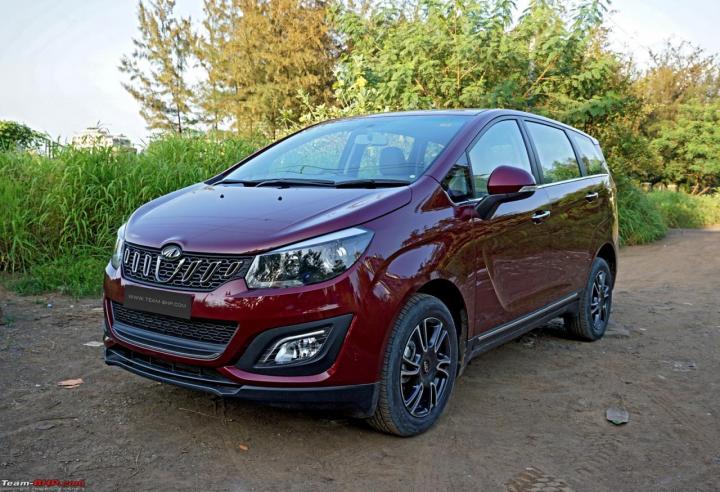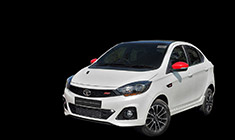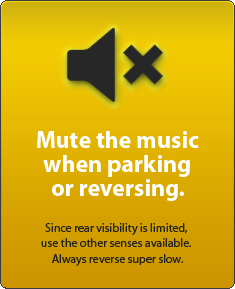News
Q&A about BS6 Diesel Engines & DPF Problems in India
As a diesel particulate filter calibration specialist, I'm hoping to clarify some doubts and misunderstandings regarding BS6 diesel engines and DPF.
BHPian ninjanayak recently shared this with other enthusiasts.
What are the variables involved in the DPF being full? I am guessing engine speed, the running duration would increase the EGT, the capacity of the DPF.
The driving behaviour and the payload are the main variables I would say. Soot fills up faster in low speed (less than 20kmph) and fully loaded or overloaded vehicles. So avoiding these two patterns in your driving as much as possible will help. EGT design also has an important role in this especially in Indian conditions, which many OEMs are finding out now.
What about passive regen (if I have named it correctly)? The automatic clearing of the DPF when the vehicle is being driven in a highway setting.
Passive Regen occurs when the DPF is operating at 250 - 400 degree celsius temperature when the Nitrogen Oxides in the exhaust react with the Soot particles to generate CO2. This temperature is present when driving at more than 20kmph and at sightly higher average engine rpm as I said in the previous question. So if you're driving at decent speeds the DPF will observe good passive regen.
Don't diesels generate more soot when the throttle input increases? Deriving from a lot of cars spewing black soot while accelerating, so wouldn't that be counterproductive especially if someone is trying an Italian tuneup?
The major problem with driving at full throttle is poor combustion in case of small engine sizes and bad turbochargers. Full throttle = poor combustion = more soot.
The same can be observed in uphill driving conditions, when engines are at full throttle combined with less air you get a lot of black smoke.
So I would suggest operating at part throttle at 2000-2500rpms for 40-60mins once every 10 days or so, which should help with these issues. Also, avoid overloading your vehicle as much as possible as this is a major problem from my experience.
Do driving on mountain roads with higher RPMs cause the DPF to clear up? And how much does it impact when the altitude increases to say 12,000 feet above sea level?
Normal uphill driving i.e. without overloading the vehicle or operating at full throttle all the time should help clear the DPF, just like it will help in sea level or flat driving conditions. Most Indian OEMs have thoroughly tested their BS6 offerings to 13,000 ft, but due to COVID and its related restrictions, good validation in these conditions is not well documented. So there are decent chances that an out of spec vehicle will cause issues at these conditions. During the upcoming winter season, most OEMs may complete these tests and solve issues if any.
What is the driving style which fills up the DPF the fastest?
Very low speeds (less than 20kmph), overloading the vehicle and frequent start-stops are the major causes for fast DPF filling.
Is there any driving condition under which the DPF never fills up requiring a manual regen over 1 lakh km?
In the case of trucks (more than 2.5L engine capacity) the regen interval can be as high as 3000-5000 km. But for most passenger car applications the regen interval is the range as shown below:
- City: 200-500 km
- Rural or semi-urban: 500-800 km
- Highway: 1000-2000 km.
No going around it, I suppose.
Does the DPF need changing due to age or usage?
Depending on the OEM, the EGT is designed for the full useful life of the vehicle. Most Indian vehicles are rated for 1,00,000-2,00,000 km. So unless something really goes wrong with the EGT or the Engine there should not be a reason to replace it until it's full useful life.
Would you recommend a BS6 diesel car for the following use cases expecting a 2000km running per month?
If your daily commute in city drive is less than 25 minutes with a lot of very low-speed driving, I would suggest a bigger diesel engine car or a Petrol one. Small engine sizes (less than 1.5L) can cause issues in condition(a). Apart from that, all other conditions should be fine for diesel cars with the suggestions mentioned above.
- 90% city with a monthly 300 km highway trip in the plains
- 70% city and 30% highway on plains
- 60% city and 40% mountain roads
- 60% city 20% highway in the plains and 20% high altitude areas
What is are the differences in calibrating DPF for Indian conditions as compared to other countries?
Indian consumers especially commercial vehicle operators routinely overload their vehicles, so this was a major problem for us during the calibration. Another problem was specific to e-commerce/delivery vehicles or garbage collection vehicles where the drive pattern was very challenging for soot filling and regeneration.
Keeping in mind the current issues with the DPF and expecting stricter emissions in the next emission standard BS7/8, what is your view on diesel continuing in smaller vehicles 2-3 years down the line
This is a tough one as I am sure OEMs also don't have an answer as of now. The technology is available, be it SCR or PM sensor or OBD. It will come down to the economics of the car I suppose. In case of sufficient volumes and customer demands,
OEMs will try hybrid options.
But for commercial vehicles, there is no suitable alternative.
The problems with DPF are mostly solved as far as I know. There are remote cases where there are still a few problems and OEMs have been trying hard to solve them for 1.5 years, in spite of COVID and all its problems. Remember BS6 was a huge technology jump for all OEMs and issues were expected. OEMs especially M&M and TATA have done a very good job regarding this.
What happens to the remains of the burnt soot after the regen?
It's just a gas, Carbon dioxide
Is it completely gaseous or fine powder?
Gaseous
How are they ejected completely?
The gas just passes through the filter and comes out of the tailpipe as CO2
Are they not harmful anymore? What about any smell or black colour?
CO2 is a clear gas and doesn't have any health effects as far as I know, but it is a contributor to climate change
This is the reaction that happens during regen: Soot(Carbon) + O2 + Heat ----> CO2 + Heat
My concern still is that the diesels have spoiled a lot of drivers to carry low RPMs to maximize FE, now that's going to be counterproductive in this situation. How much diesel is needed for each auto regen if it's possible to estimate it?
From the projects I have worked on, it took roughly 200-250ml of extra diesel to do an active regeneration. Bigger engines will consume a slightly higher amount.
Please correct me if I am wrong, but if a regen happens every 1000 km which I am assuming is equivalent to a 60 min drive at 2500 rpm which would be about 70-80 km at highway speeds at an FE of 20kmpl that is 4 litres of diesel. Is this heading in the right direction or doesn't make sense at all?
Some things to clarify:
- Passive regen doesn't consume any extra fuel, it happens spontaneously without any special input from the ECU (Engine Control Unit). So the FE you get regularly will apply here as well.
- Passive Regen is a very slow process and takes a long time to clear the DPF. That's why you have mentioned the 60 minutes in your post.
- Active Regen specifically triggered by the ECU, typically lasts for 20-25 mins. Most cars have a lamp on the cluster indicating Active regen, you can time this for your reference.
- The active Regen process consumes extra fuel. The fuel penalty you incur happens only during active regen i.e if you regularly get 20kmpl FE, during an auto regen every 1000km it drops to 17-18kmpl for 20-25 minutes.
As an aspirant new car buyer, have read up about this issue ad nauseum and keep posting questions here and elsewhere, though all that I receive are anecdotal reassuring responses, primarily by owners who drive mostly on highways. I surprisingly find even people professionally connected with the automobile world unaware of the issue(or its gravity), let alone owners. I strongly feel that the manufacturers need to make their customers explicitly aware of these issues, to avoid further grievances.
While I agree to an extent that OEMs can do a better job to address these issues and communicate them to customers, I would also like to point out that apart from enthusiasts or aficionados, most people don't care about the technical aspects of their cars, they just want it to work.
Most problems with DPFs or BS6 are solved or are being actively worked on by companies.
These are time-consuming tests, in the projects I have worked on, it took us 18-20 months of tests and validation to arrive at a finished BS6 product. These are teething issues that will mostly be solved by Feb-March of next year.
My primary impression now is: BS6 diesels are primarily meant for highway drivers who can rev their engines beyond 2500RPMs for most of their journey- and who have an about 500km monthly trip on their itineraries anyway. Am I right? No more BS6 diesels for city dwellers? Do we have any realistic hope with any fuel additives?
Not necessarily, most cars operate fine unless in very extreme driving cases like very low-speed driving (less than 20kmph), frequent start-stops and overloading conditions. OEMs have made sure that there are no problems in most driving conditions. So as I mentioned in a previous reply, with decent care, 95-98% of vehicles sold would not face any issues in city conditions.
And to what extent do you see diesel engines continuing in various vehicle segments e.g. small cars, SUVs and commercial vehicles, especially with the onslaught of EVs?
Small cars already don't have diesel options. SUVs and commercial vehicles will continue to offer diesel engine options up until 2030 as per estimates, as EVs are just not a viable solution or have their own deficiencies.
Also, can you offer your insights on what went wrong with Ford diesels?
While I don't know the problem in detail, the projects I worked on and Ford vehicles probably share the same software architecture. We also came across similar problems during our validation and were able to solve them. There is not much that can be done by end-users, Ford has to solve them from their side and flash the new software onto problematic vehicles.
I understand that people are disappointed or frustrated regarding BS6, but remember BS6 was a huge technology jump for all OEMs and issues were expected. OEMs especially M&M and Tata have done a very good job regarding this.
Check out BHPian comments for more insights and information.
- Tags:
- Indian
- Member Content
- DPF























